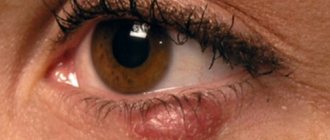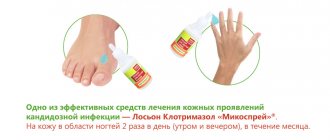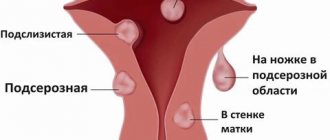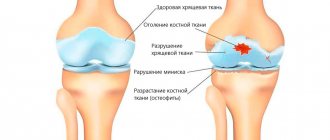Often in the morning a person does not look aesthetically pleasing enough; for example, the eyelids may swell. There is nothing terrible about this, but the appearance suffers considerably, especially if this happened to a representative of the fair sex. At the same time, men often experience discomfort when their eyes are swollen after sleep, since others may joke about the large amount of alcohol they drank or a stormy night. To know how to deal with this problem, you need to understand the main causes of this condition.
Why is this happening?
There are many reasons why your eyelids may swell in the morning. For example, the skin itself, which is located in this area, is very sensitive to external influences. If any circulatory problems occur in this area, the fluid very quickly stagnates in the skin tissue, which leads to the formation of so-called bags under the eyes. In addition, swelling in the eye area may be associated with insufficient fluid intake or with a large volume of water drunk directly at night.
Causes
As we said earlier, the list of possible causes of swelling of the eyelids is quite wide. These can be serious diseases, or external factors, due to which the eyelids “swell” occasionally.
The search for causes should begin in the ophthalmologist's office
Factors contributing to the formation of eyelid edema
- Hot weather – in summer the problem of edema is more acute, since under the influence of hot weather the process of fluid distribution in the body may not occur correctly. In this case, not only the eyelids swell, but the entire face;
- Diet – an abundance of salty or spicy foods consumed throughout the day. Also, swelling of the eyelids can be caused by excessive water consumption before bed;
- Alcohol abuse;
- Incorrect posture during sleep, in which fluid in the body accumulates in the upper part of the body;
- Long-term lack of sleep, stress;
- If there is a lack of fluid, the body will begin to accumulate it in different areas, including the eyelids. Therefore, it is not recommended to limit your drinking regime.
What diseases cause swelling of the eyelids?
Let's move on to the causes of eyelid swelling related to the health of the eyes and body.
Conjunctivitis
An eye disease that causes damage to the mucous membrane is often accompanied by swelling and redness of the eyelids. In this case, severe itching and purulent discharge from the eyes may occur.
Conjunctivitis can be infectious or non-infectious. Regardless of the nature of the disease, the treatment and necessary medications are determined by the ophthalmologist.
Blepharitis
Another possible cause of thickening of the eyelid margin is blepharitis. This disease affects the eyelids, can cause ulcers, and can be acute or chronic. Typically, acute blepharitis is caused by bacterial infections and viruses.
Also, swollen eyelids can signal the development of blepharoconjunctivitis. With this disease, the edges of the eyelids and the mucous membrane of the eye are affected.
Both inflammations must be treated under the supervision of an ophthalmologist.
Barley
The most common medical cause of puffy eyelids is an inflammatory condition known as a stye. This disease most often affects the upper eyelid. In this case, a so-called “bump” appears under the affected eyelid, noticeable from the side. In some cases, the seal has a white “head.”
Barley is accompanied by painful sensations in the affected area. The disease is caused by a bacterial infection, so to receive adequate treatment you must consult an ophthalmologist.
Allergy
An allergic reaction of the body can also manifest itself as swelling of the eyelids. This is observed both with seasonal allergies and with allergies to low-quality cosmetics or other allergens.
In this case, it is also necessary to begin treatment by visiting an ophthalmologist to exclude other possible causes of swelling. If necessary, the doctor will write a referral to a related specialist, in this case, an allergist.
Cold or flu
The eyelids also swell with respiratory diseases. At this time, the work of the lacrimal glands intensifies, and therefore the flow of fluid increases. This is what causes swelling. Most often, both eyes are affected, and swelling can occur simultaneously in the lower and upper eyelids.
Eyelids may swell due to respiratory problems
This condition is usually not dangerous, the swelling subsides by the time of recovery. However, if the patient has recovered and the swelling of the eyelids persists, it is necessary to urgently consult an ophthalmologist.
Diseases of internal organs
Edema can signal serious pathologies of the cardiovascular system or kidneys. In this case, as a rule, there is bilateral swelling of the eyelids. This condition can be dangerous, so it is important to seek help from a specialist as soon as possible!
Start by visiting an ophthalmologist. If the doctor suspects a connection between swelling of the eyelids and the condition of the internal organs, you will be referred to a specialized specialist.
Neoplasms of the eyelids
The occurrence of any type of neoplasm - cysts, benign or malignant tumors - is accompanied by swelling of the eyelids. It is impossible to independently diagnose such pathologies; it is necessary to examine a specialist and select adequate treatment.
Effective prevention methods
If the skin of your eyelids is constantly swollen in the morning, then you need to pay attention to your lifestyle, as well as your diet. To prevent this unpleasant manifestation, you can reduce the amount of carbonated and sparkling alcoholic drinks consumed. After six in the evening, you should limit the consumption of any liquid (try only to satisfy the necessary needs). You also need to reduce your intake of salt and artificial sweeteners.
It is important to carefully monitor your work schedule and not sit at the computer for more than 15 minutes without a break. In addition, you should get good sleep, that is, devote at least eight hours a day to this.
During periods of solar activity, you need to protect your facial skin from direct sunlight and wear protective glasses. In addition, use a cream that will protect the skin from the harmful effects of ultraviolet radiation.
Protective cosmetics should be applied to the skin around the eyes not only during the day, but also at night. The choice of evening creams for the skin around the eyes is very large, so protecting the delicate areas is quite simple. This cosmetics will help not only protect the epidermis, but also get rid of bags under the eyes. It is good if such creams contain natural ingredients such as cornflower, arnica and horse chestnut extract.
What to do if you have an eyelid tumor
- Consulting a doctor is a must for any swelling. Self-medication can lead to disastrous consequences, including angioedema and hospitalization;
- Some folk remedies are quite effective, but their use must be under the supervision of a doctor;
- One of the main preventive measures is following the rules of facial skin care;
- Refuse all types of cosmetics, be it creams or decorative cosmetics, as well as the use of contact lenses;
- Don't rub your eyes;
- Avoid using any medications on your own - they can cause an increase in eye pressure;
- If you are sure that the cause of swollen eyelids is an allergy, then you should immediately consult an ophthalmologist - the doctor will prescribe you antihistamines.
If your eyelids are swollen, visit an ophthalmologist's office - a specialist will examine you and refer you for further examinations. To diagnose pathologies of the excretory, digestive, and circulatory systems, general tests are usually performed.
If you have not found the cause of eyelid swelling on your own, then this is an undeniable reason to visit an ophthalmologist's office. Many people begin treating eyelid swelling on their own, without resorting to medical help - this is a mistake. After all, without identifying the actual cause of the disease, self-medication can only complicate the situation and aggravate the condition of the body. Many begin to apply a warm cloth to their eyes for relief, while others take antihistamines - all these measures can lead to serious negative complications.
Chalazion
Cones of this type are quite common. They develop from a sebaceous gland whose duct is blocked. This formation is also called a “grading lump” or “cold barley.” The continued production of sebaceous gland secretion leads to the accumulation of a viscous mass in the capsule, which stretches and thickens, taking the form of a dense lump. On palpation, the contents under the skin feel like a moving ball.
Cold barley develops at a slow pace, so it does not cause pain. Only a formed hard capsule can cause pain when squeezed. If a chalazion is not treated, it can develop into a cyst. As the lump develops, the risk of complications increases: inflammation, formation of a purulent fistula, granulation.
Tests and diagnostics
Examination of a patient by an ophthalmologist. This is usually enough to identify the disease and make a diagnosis. If necessary, additional examinations are prescribed:
- Culture of eye discharge.
- demodicosis is suspected .
- Ultrasound.
- Biochemical tests to assess kidney and liver function.
- Determination of the level of specific IgE in allergic diseases.
- Tests with allergens (nasal/conjunctival) in case the results of determining allergen-specific IgE are questionable.
Video from our specialist about the disease and its treatment
There are cases where chalazion spontaneously resolved without medical intervention. However, most often this formation does not develop back and requires prompt and conservative help. Treatment for such a lump on the eyelid is prescribed by an ophthalmologist. If the chalazion is small and not old, you can limit yourself to UHF therapy, ointments and eye drops. More severe cases are treated by injecting corticosteroids into the capsule cavity. Local drugs (ofloxacin, dexamethasone, sodium sulfacyl, hadrocortisone, levofloxacin, tetracycline ointment) can also be used as an addition to the injection.
If drug therapy is ineffective, the doctor decides on surgical treatment. The operation to remove a chalazion is performed under local anesthesia and lasts no longer than 15 minutes.
List of sources
- Ophthalmology: textbook / ed. E.I. Sidorenko. — 3rd ed., revised. and additional - M.: Publishing house. group "GEOTAR-Media", 2013. - 638 p.
- Rational pharmacotherapy in ophthalmology: A guide for practitioners / Ed. ed. E.A. Egorova. - M.: Litterra, 2004. - 954 p.
- Astakhov Yu.S., Angelopulo G.V., Dzhaliashvili O.A. Eye diseases: for general practitioners: Reference book. allowance. – SPb.: Special. lit., 2001. – pp. 147–150.
- Zhaboyedov G.N., Skrinnik R.L. Optic nerve damage. - Kyiv: “Health”, 2006.-472 p.
- Kanski D. Acquired diseases of the macular region and associated conditions / D. Kanski // Clinical ophthalmology: a systematic approach / ed. V. P. Ericheva (translated from English). – Wroclaw: Elsevier Urban & Partner Publishing House, 2009. P. 629.
Classification
Conditionally we can distinguish:
- Infectious-inflammatory edema caused by pathogenic microflora.
- Not inflammatory edema . Most often caused by dysfunction of internal organs (kidneys, heart, thyroid gland). Swelling appears mainly in the morning in both eyes on the lower eyelids.
- Allergic edema . Characterized by rapid development after an allergen enters the body. The most aggressive form is Quincke's edema .
- Traumatic swelling. The eyelid swells at the top/bottom due to damage to the surrounding tissues and muscles of the face.
- Reactive edema. Develops due to inflammation of the paranasal sinuses.
- Congestive optic disc in intracranial hypertension .








